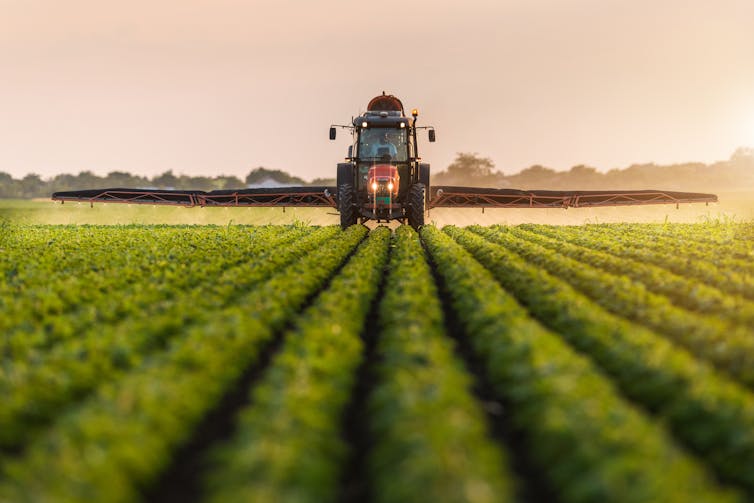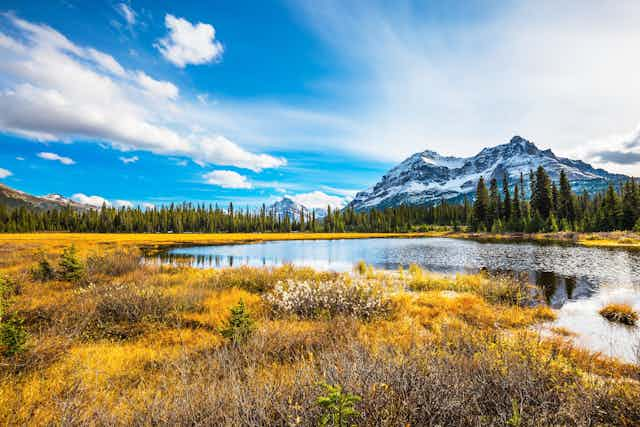Barriers created by “fortress conservation” — as in the near-total sectioning off of land for conservation without human interference — are threatening important dietary diversity for the up to 1.5 billion people around the world who rely on wild foods, from bushmeat to wild vegetables and fruit.
Conservation, especially when modelled on notions of “pristine nature” — environments untouched by human influence — can create obstacles by limiting access to important food sources. We must shift from strict fortress conservation to more integrated, sustainable use of rural landscapes if we are to achieve both biodiversity conservation and dietary outcomes.
Policymakers must take this into account and design policies that better inform global, regional and national commitments to food security and nutrition — especially in the context an ever-changing and unpredictable climate.
These policies must recognize people’s rights of access to these landscapes to ensure dietary diversity in rural settings. Policies for sustainable forestry are also a key component of sustainable food systems.
Settling down
Human societies were nomadic for the majority of our history. In turn, traditional diets were mostly comprised of wild foods, both plants and animals, that were harvested from the surrounding environment.
However, over time, communities became increasingly sedentary and relied more and more on foods that were cultivated, rather than those collected from the wild.
This process dramatically accelerated in the last century with the Green Revolution beginning in the 1940s, characterized by the increased dominance of monoculture agriculture. This shift is the greatest driver of forest and other habitat loss globally, resulting in the substantial simplification of our diets.

However, we have since learned that biodiverse wild and naturalized species are integral in rural food consumption, contributing to diverse diets, better nutrition and overall health and well-being, often for the poorest members of society. In other words, diversity in diets is linked with better nutrition and improved overall health.
Up to 1.5 billion people globally depend on wild foods for nutrition and dietary diversity, particularly in the tropics. Building policies that protect people’s rights to access these landscapes is of paramount importance to ensure such dietary diversity in many rural settings.
We must devote attention to people living in rural areas around the planet, where their access to wild foods — including those found in forests — has become limited. That’s cutting off important sources of healthy food and nutrition.
Read more: How culturally appropriate diets can be a pathway to food security in the Canadian Arctic
Global initiatives to set aside land for biodiversity conservation can compromise such access and thus significantly reduce dietary diversity.
Current commitments, such as the 30 x 30 initiative, in the name of conservation can result in the annexation of land and curtail the rights and access to diverse food sources by local people, despite evidence that locally-led conservation can play an integral role in improving both ecological and human welfare.
Local stewards
It is increasingly recognized that those who benefit from access — mostly Indigenous Peoples and local communities — are the best stewards of that land.
Food is a fundamental human right, recognized by many international treaties and nation states. However, land annexation in the name of conservation, and loss of access to the natural resources they contain, continues unabated.
The major issue is that the notion of “pristine nature” does not exist in most landscapes, both tropical and temperate. Indeed, most environments are more a manifestation of human use and management than the product of natural forces alone. The recognition of how humans have shaped and promoted biodiversity-rich landscapes is often missed in the implmentation of conservation.
It’s time for action on the evidence that forests and tree-based landscapes can (and must be) a small but integral part of the solution to the global problem of food security and nutrition. In essence, forests and trees should play a role in global food security strategies.

The role of wild foods in contributing to the United Nations’ Sustainable Development Goal 2, Zero Hunger, has also been underscored and there is considerable emerging evidence on just how sustainable tree-based wild food systems could contribute to the overall 2030 Agenda on Sustainable Development.
Yet little real progress has been made in recognizing this at a functional or policy level, acknowledging the fundamental contribution of wild foods to dietary diversity.
The discourse of achieving global food security, with a focus on monoculture crops and industrial agriculture with all its environmental and nutritional deficiencies, remains dominant. This is resulting in continuing habitat loss, primarily within forests and other tree-based systems.
The way forward
The recent Declaration on Sustainable Agriculture, Resilient Food Systems and Climate Action at the COP28 climate summit goes some way to recognize the importance of “smallholders, family farmers, fisherfolk and other producers and food workers.” However, there is no mention of the role of wild foods in rural nutrition, nor the role that forests and trees play in supporting agriculture through ecosystem service provision.
Read more: Flipping Indigenous regional development in Newfoundland upside-down: lessons from Australia
This must change to allow sustainable use initiatives to play a critical role in complementing and supporting diverse and nutritious diets for the rural poor — without compromising biodiversity goals or climate change mitigation strategies.

